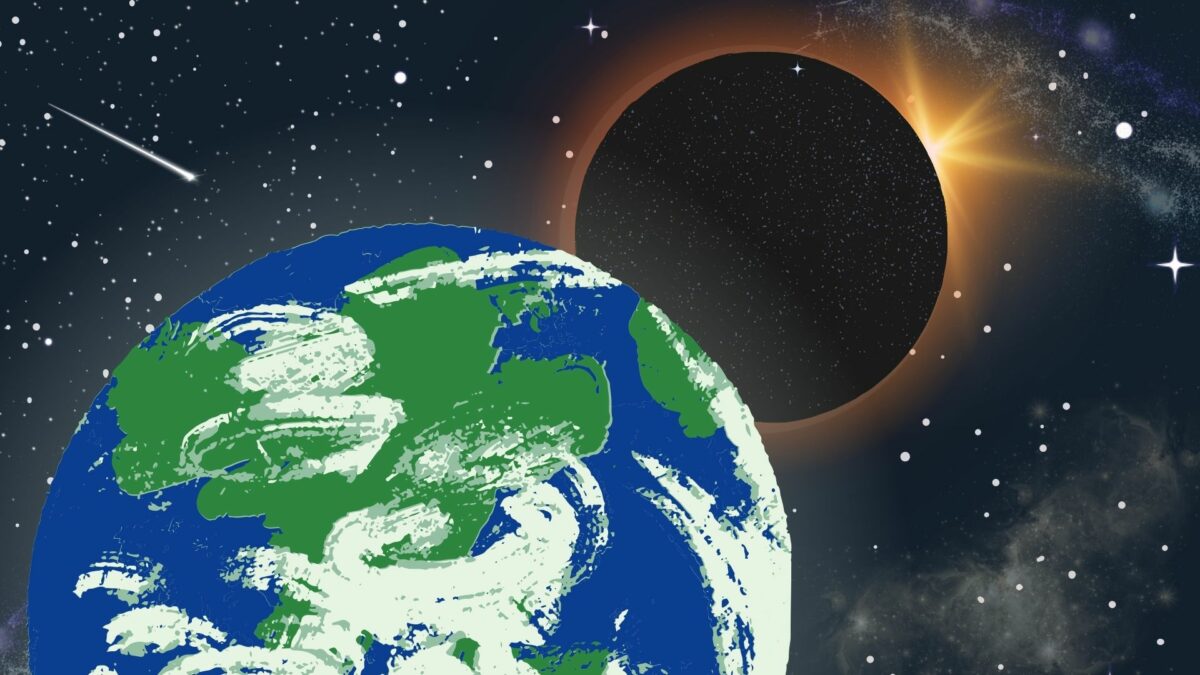
Canadians are preparing to observe one of the biggest events in astronomy. On April 8, 2024, a total solar eclipse will pass over Mexico, the United States, and Canada. According to the Weather Network, this event will be the first time since February 26, 1979 that millions of Canadians will have the opportunity to observe a total solar eclipse without having to go too far from home. This total solar eclipse will allow many people to have a unique and unforgettable experience in a lifetime. Preparations for this great event are underway in different cities and towns where this rare celestial event can be seen in its entirety.
According to NASA, a total solar eclipse occurs when the Moon passes between the Sun and Earth, which blocks the entire face of the sun. During the eclipse event the sky will darken as if it were night.
In some places, people will be able to see the sun’s corona which usually cannot be seen due to sunlight, and depending on other locations people will only be able to see a partial eclipse which is when the moon obscures most of the face of the sun. The next total solar eclipse visible from North America will not occur until 2044.
Sneha Kaur, a PhD Student at the University of Toronto expresses excitement and fear about the upcoming total solar eclipse, with mixed beliefs and predictions from childhood. ”I’m excited I grew up being totally scared about it, my family told me not to step out during this time . I don’t know why but we were told to be scared,” says Kaur.
Where it will be visible?
According to the Weather Network the eclipse will travel along a line approximately 200 kilometers wide that extends from the equatorial Pacific to the North Atlantic, crossing Mexico, the United States, and eastern Canada. In this direction, the moon will completely cover the sun.
In Sudbury, Toronto, and Hamilton, the eclipse will be visible at 3:19 p.m. it will reach its maximum, and a minute later it can be seen in Niagara Falls. Each city will have a very different look at the maximum eclipse. While many Canadians may experience a partial eclipse, below is the path of the total eclipse.
However, if you want to see the entirety with your own eyes, there are a few things you should consider to stay safe and protect your eyes.
Brian McNamara is the Chair and Professor at the University of Waterloo in Physics and Astronomy. He alerted people about eye damage that can be caused during the upcoming solar eclipse, pointing out that using adequate eye protection is important for all people who wish to see it .
“Never just look directly at the sun, even if it’s 99.9%, obscured that 1% has very high-intensity light, and it can damage your retina. So, you know, at the very least, make sure you have eclipse classes, and make sure the glasses are tested. You can even use a flashlight behind it, just to test it to make sure that it’s okay,” says McNamara.
Canadian Association of Optometrics provided some tips that will help people enjoy watching this eclipse safely:
- Don’t get burned: Staring at the sun directory can cause damage on the retina, this could be temporary or permanent.
- Watch Online: You will be able to watch this total eclipse online at NASA/Exploratorium livestream
- Check it out: It’s recommended if you experience any issues with your eyes, visit your optometrist immediately.
Observers can expect total darkness on this day for about three minutes. It is important for anyone planning to travel or watch the total solar eclipse to take all the necessary precautions to enjoy this unique experience.
